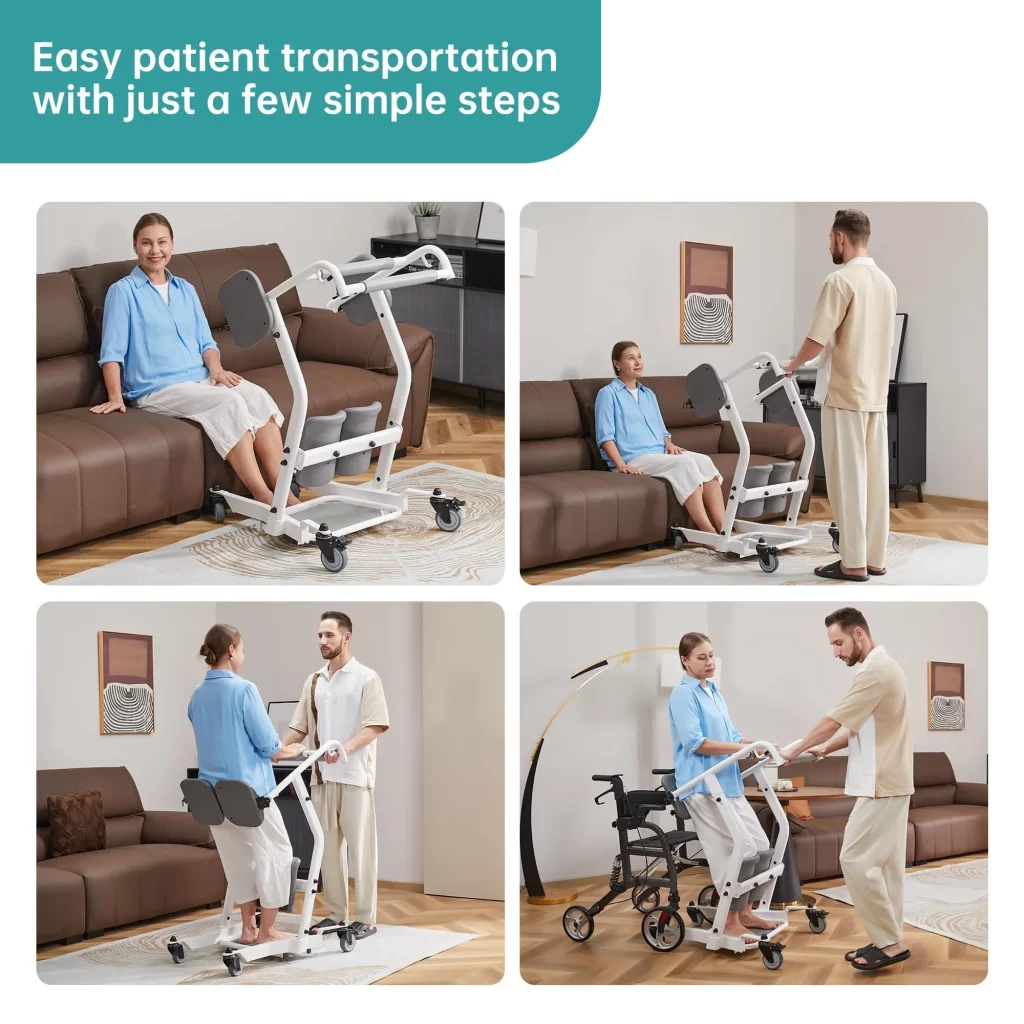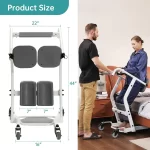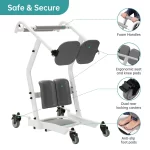A sit-to-stand lift is a great tool for helping people move from a sitting to a standing position safely. These devices are commonly used in hospitals, nursing homes, and even in private homes. If someone has trouble standing up on their own due to weakness, illness, or injury, a sit to stand lift for home use can make life easier.
But here’s the thing—not everyone should use a sit-to-stand lift. In fact, using one in the wrong situation can be unsafe. So, who should not use a patient sit to stand lift? Let’s break it down in simple, everyday terms.
What Is a Sit-to-Stand Lift?
A sit-to-stand lift is a mobility device designed to assist people in moving from a seated position to a standing one. It works by providing support under the arms and around the back while gently lifting the user to a standing posture. Some models also help with transfers, like moving someone from a wheelchair to a bed.
These lifts are especially useful for:
✔ People with weak legs or poor balance
✔ Seniors who struggle to stand up alone
✔ Patients recovering from surgery or illness
✔ Caregivers who need to move patients safely
However, sit to stand lifts aren’t for everyone. In some cases, they can be dangerous or simply ineffective.
Who Should NOT Use a Sit-to-Stand Lift?
1. People Who Can’t Support Any of Their Own Weight
A sit-to-stand lift is designed for individuals who have some ability to support themselves. If someone can’t bear any weight at all on their legs, this device isn’t the right choice.
✅ Better alternative: A full-body patient lift is a safer option for those who can’t stand at all.
2. Those with Severe Weakness or Paralysis
If someone has severe muscle weakness or paralysis (like in advanced stages of a neurological disease or after a serious stroke), they may not be able to participate in the standing process.
A sit to stand lift for home use requires some effort from the user. If they can’t hold onto the lift’s handles or keep their upper body stable, it’s not the right fit.
✅ Better alternative: A Hoyer lift or a ceiling lift can provide full-body support.
3. Individuals with Severe Joint Pain or Stiffness
People with severe arthritis, stiff joints, or limited range of motion may find sit-to-stand lifts uncomfortable or even painful. If moving their legs or bending their knees causes extreme discomfort, forcing them into a standing position isn’t a good idea.
✅ Better alternative: A manual transfer with a caregiver or a hydraulic patient lift might be gentler.
4. Anyone Who Can Stand Up Without Assistance
This might sound obvious, but if someone can stand up safely on their own or with just a little help, they don’t need a sit-to-stand lift. Using one unnecessarily can actually decrease their mobility over time by making them dependent on it.
✅ Better alternative: A grab bar or stand assist aid might be enough.
5. People Who Have Uncontrolled Movements
If someone has a condition that causes uncontrollable movements, like advanced Parkinson’s disease or certain types of brain injuries, a sit-to-stand lift might not be stable enough for them.
Unpredictable movements can make it difficult to secure the person properly in the lift, leading to a higher risk of falls or injuries.
✅ Better alternative: A wheelchair lift or full-body patient lift might be safer.
6. Individuals with Severe Cognitive Impairment
A patient sit to stand lift requires some level of understanding and cooperation from the user. If someone has advanced dementia, Alzheimer’s, or another cognitive condition that prevents them from following instructions, using a sit-to-stand lift can be dangerous.
They may forget to hold onto the handles, lean the wrong way, or try to move suddenly—creating a risk of falls.
✅ Better alternative: A fully supportive lift with caregiver assistance.
7. Anyone Who Feels Unsafe or Uncomfortable
Even if someone technically meets the requirements for a sit to stand lift, they may still find it uncomfortable, scary, or unstable. If a person feels anxious or unsafe while using it, they might tense up or resist, making the lift less effective.
✅ Better alternative: A different type of mobility aid that feels safer for them.
Alternatives to Sit-to-Stand Lifts
If a sit-to-stand lift isn’t the right fit, there are other options that might work better:
✔ Full-Body Patient Lifts – Provide complete support for individuals who can’t bear weight.
✔ Wheelchair Lifts – Help move people between sitting and standing without requiring much effort.
✔ Grab Bars & Stand Assist Aids – Useful for people who just need a little extra help.
✔ Ceiling Lifts – A good long-term solution for home care when regular transfers are needed.
Is a Sit-to-Stand Lift Right for You?
A sit-to-stand lift is a fantastic tool—but only for the right person. It’s designed for people who can bear some weight, follow instructions, and stay stable while being lifted.
🚫 If someone has no leg strength, severe pain, cognitive issues, or uncontrolled movements, a sit to stand lift isn’t the best choice.
Instead, consider full-body lifts, wheelchair lifts, or other supportive devices that better fit their needs.
When choosing any mobility aid, safety and comfort come first. The goal is to help people move safely, not put them at risk—so make sure the device you pick is the right one!


